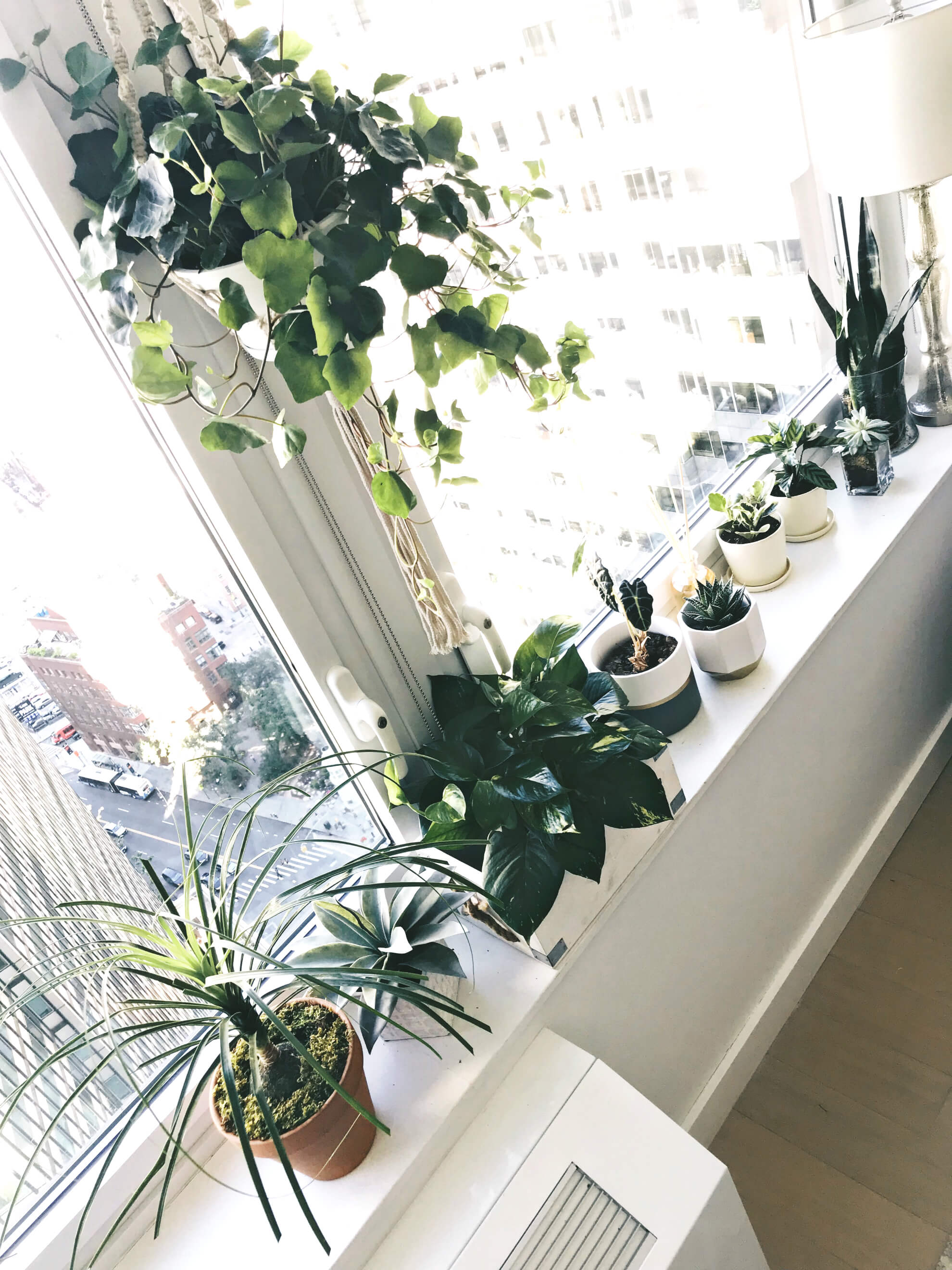
When I first moved into my new apartment and saw these enormous northeast-facing windows, the only thing on my mind was to deck them out with lots and lots of greenery. Having an indoor garden has been something I’ve desired ever since moving to the city, especially after understanding how important it is to have plants in an apartment.
From the physical and mental health benefits to smart & easy plant care, here are reasons why apartment dwellers should have indoor plants and how to easily care for them in your given environment.
HEALTH BENEFITS OF INDOOR PLANTS
…
Helps to diversify bacteria in our bodies to fight infections & allergies
City dwellers & high-rise residents are less likely to be exposed to nature daily, so immunity can be compromised without the presence of indoor greenery. Therefore, household plants allow for life in an apartment to receive
Improves air quality by removing carbon dioxide & other toxins while providing extra oxygen
Extensive research by NASA has revealed that houseplants can remove up to 87% of air toxin in 24 hours! As plants take in the carbon dioxide expelled from our bodies & present in the air already, they exhale additional oxygen as a result for us to inhale. You’ll find your breathing will feel more open, fresh, and easy after just a few days of plant exposure.
Exposure reduces stress levels, boosts mental health, calms anxiety, & lowers blood pressure
They say the simple act of nature can tremendously enhance your mind, body, & spirit. An indoor garden can serve as your refuge from the outside world, increasing your overall levels of happiness and lowering feelings of loneliness & depression. When you see something you care for thriving, the mind is rewarded and motivated which allows for further efforts of increased dedication.
Improves productivity & concentration (by 15%)
If you’re someone who works from home, then the presence of plants alone can only boost your ability to focus on the work at hand. Plants help regulate humidity & increase levels of positivity.
SMART PLANT CARE & EASY TIPS
…
Choose plants that work with your lifestyle & environment
If you’re someone who’s work or lifestyle is constantly on the road, then you might want to consider plants that don’t require much of your attention in order to survive. Similar to having a pet, you don’t want to commit to something you can’t take care of.
Additionally, you don’t want to choose a plant that won’t survive in your apartment’s environment. For example, a tropical plant will need 10x more sunlight exposure than a succulent or cactus; given most apartments don’t always have the largest windows or face the appropriate direction for max sunlight, the chances of that plant surviving are very slim without artificial help (aka sun lamps.)
To make things easier for yourself, research what type of plants require little maintenance (i.e. indirect sunlight, water 1x a month, etc.) if you find yourself outside of your apartment more often than inside it. Some of the best types of plants for busy humans are aloe, cacti, ivy, peperomia, spider plant, snake plant, and succulents.
Research what each plant needs in order to thrive
After choosing what type of plant(s) to have in your apartment, you should research and list out what it needs in order to survive and thrive in this space. For example, certain plants need to be watered 1x a month while others request 1x a week in order to be happy. To ensure longevity of your plant, researching and understanding each of their needs is essential for a happy green friend.
Format a watering/rotation schedule
For those plants that need a little more TLC, set a weekly/bi-weekly calendar reminder to water &/or rotate them. This will ensure each receives the adequate amount of nutrition they need, as well as exposure to sunlight that promotes balanced growth for all sides of said plant.
Boost growth & development with supplements
Just like us, plants are what they eat. I like feeding my garden with Miracle-Gro Indoor Plant Food 1x a week to help boost their overall growth & development, especially for my small yet mighty plants that require a teeny bit more attention.
Another supplement I like to use to beautify my hard-leaf foliage is Miracle-Gro Leaf Shine. It’s odor-free, won’t clog leaf pores, and water-based – apply spray when leaves appear spotty or dull.
MY INDOOR GARDEN – PLANT SPECIES
…
Here are the beautiful plants that make up my indoor garden, where I got them, & what each of them require in order to survive & thrive:
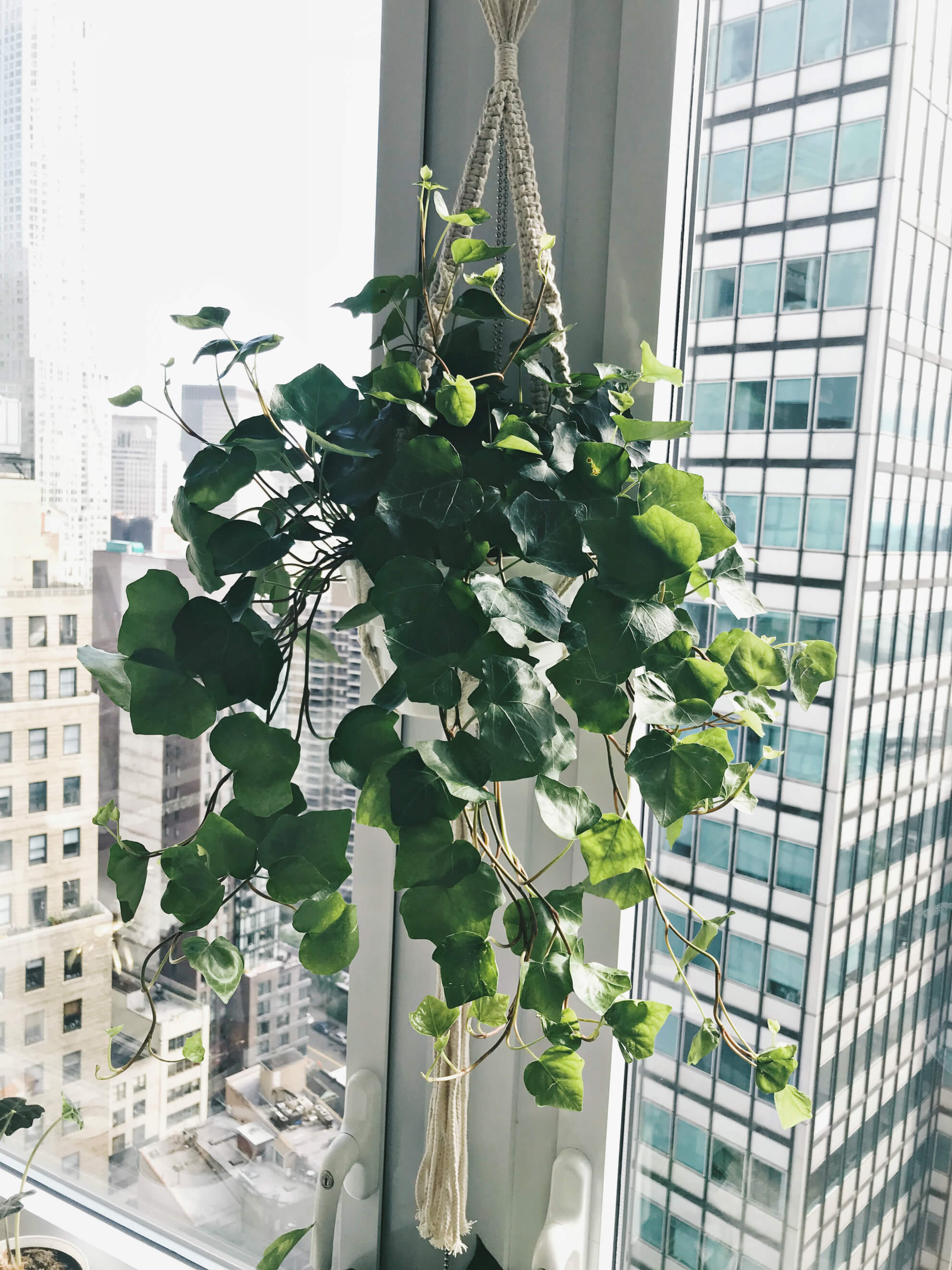
ENGLISH GREEN IVY
A delicate vine with thin, pointed tips
💧 When top layer of soil is dry
🌞 Indirect light
Purchased from: PlantShed || Macrame Hanging Planter: Amazon
English Ivy is coveted for its hardy foliage, rapid vigorous growth, drought tolerance, low maintenance, and creeping growth habit. Give indoor hanging baskets a good soak in the shower or sink.
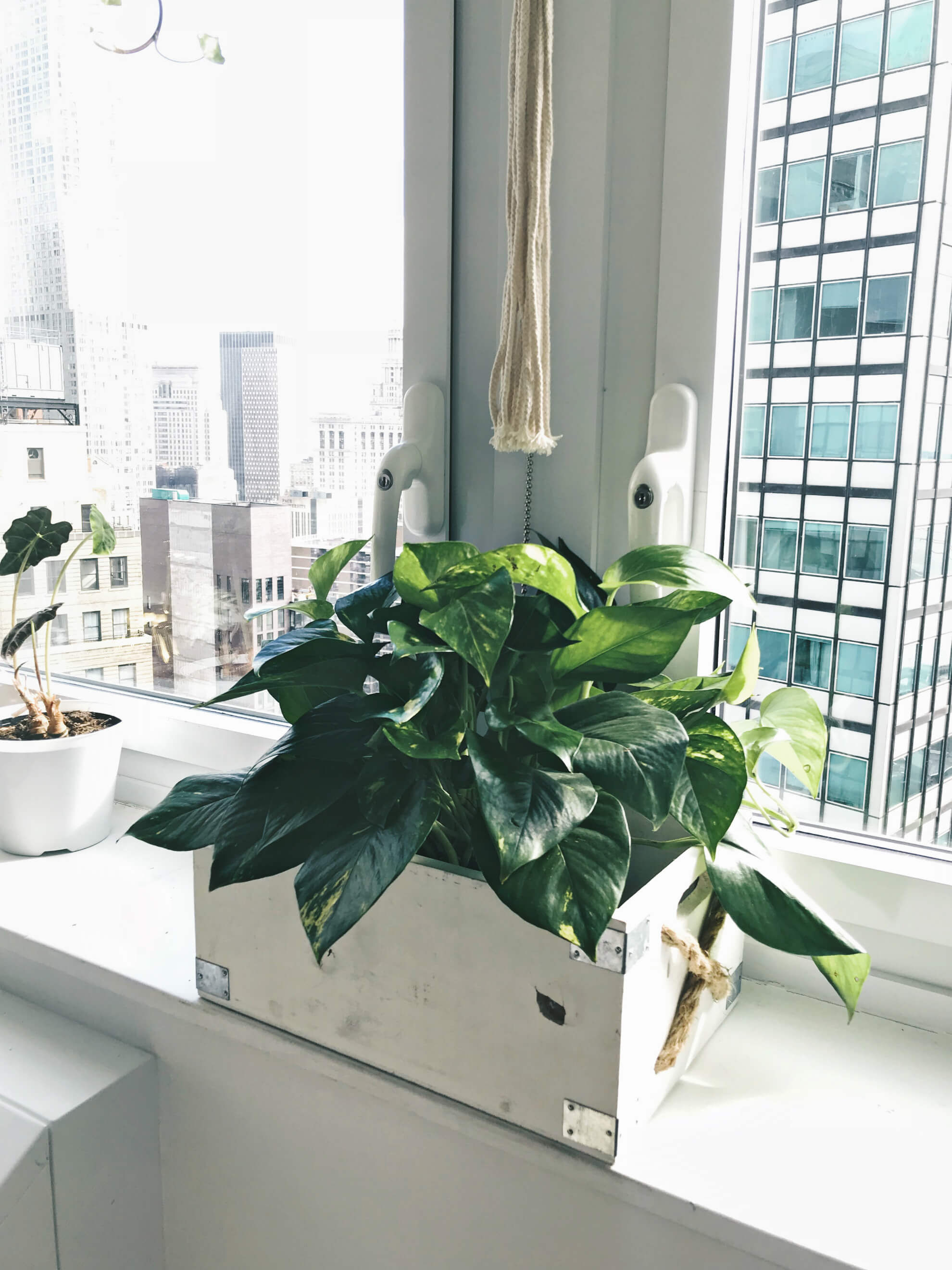
GOLDEN POTHOS
One of the best indoor plants for clean air
💧 When top layer of soil is dry
🌞 Bright, indirect light
Purchased from: PlantShed
Put anywhere and regularly give it a good soak to watch this plant thrive. Also known as Devil’s Ivy because it’s hard to kill. If away for a stretch, water the plant before departing and upon returning to watch this plant perk back up. As it grows, pinch stems to shape as needed.
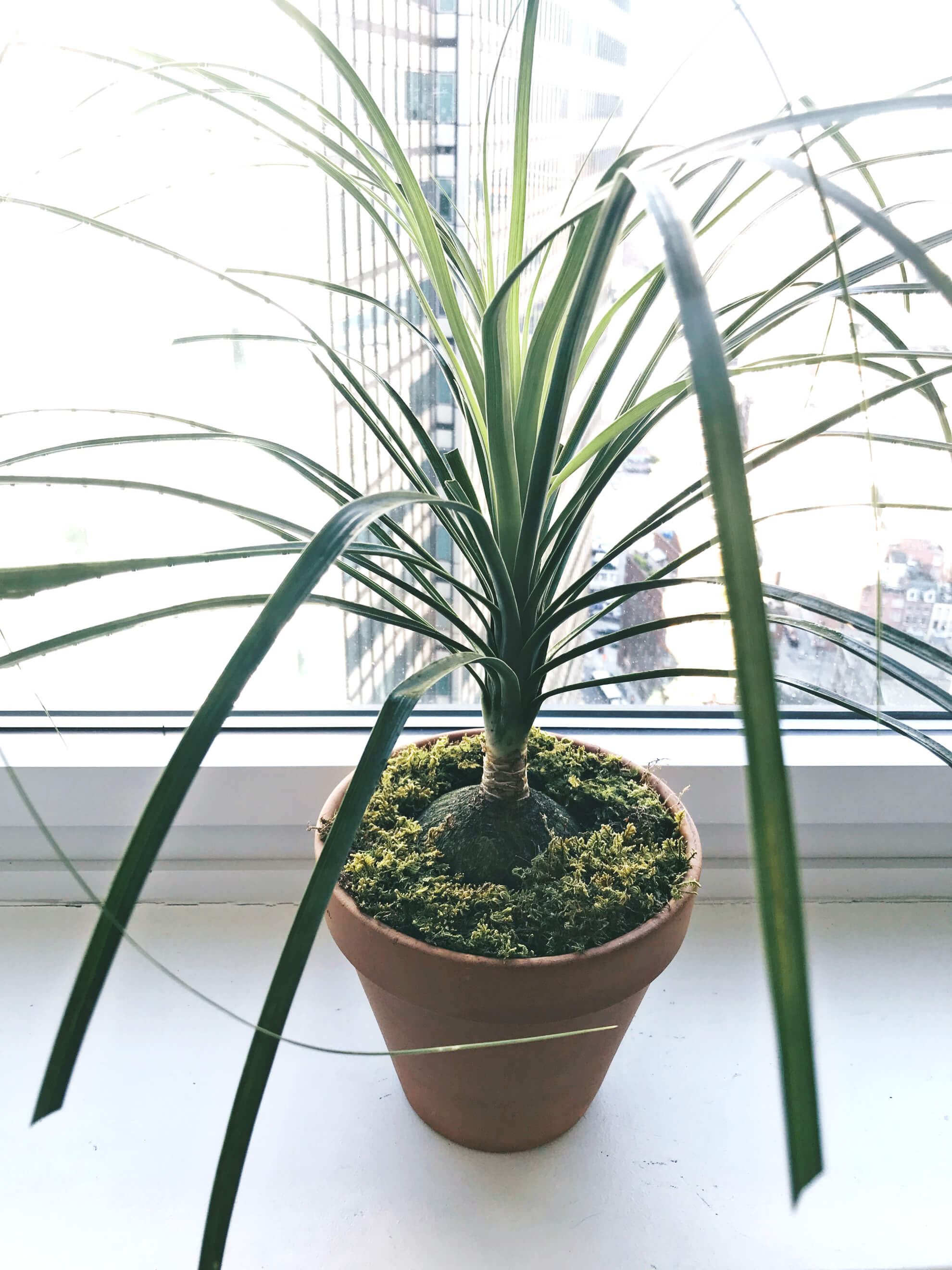
PONYTAIL PALM
An evergreen caudiciform shrub or tree, native to semi-desert areas of southeastern Mexico, Belize and Guatemala
💧 Every 3-4 weeks
🌞 Bright, indirect light
Purchased from: PlantShed
The Ponytail palm is a very popular houseplant in more temperate climates. These houseplants should be placed in a sunny window & are best grown in relatively small pots with excellent drainage.
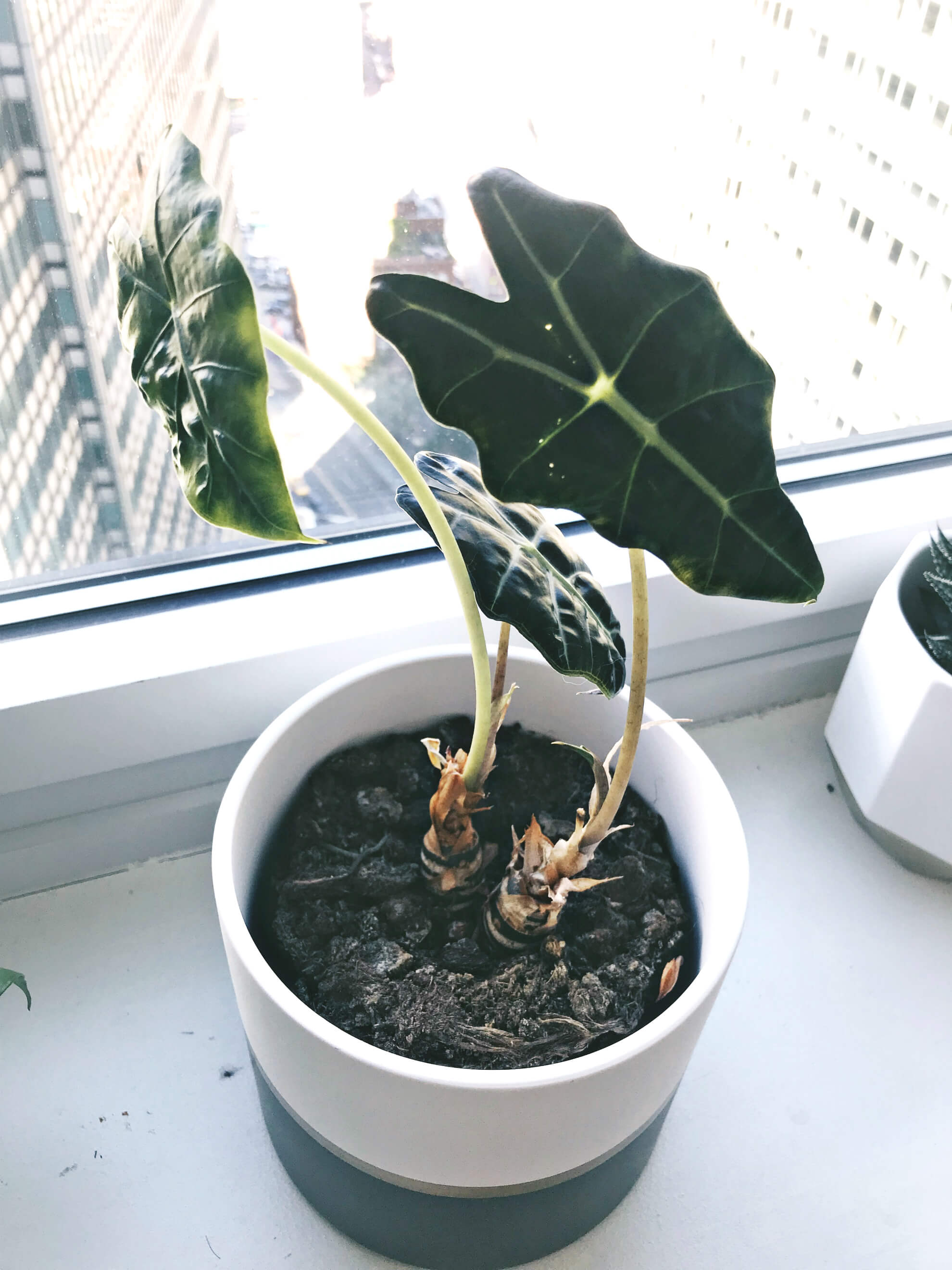
ELEPHANT EARS (ALOCASIA POLLY)
Stunning, architectural, jewel-like tropical plant
💧 1x week
🌞 High, direct light
Purchased from: Home Depot || Planter: Amazon
*This is my 1st & oldest plant – almost 5 years old!
Elephant ears bring to mind lush, tropical forests, adding drama to both gardens and containers. The most recognized forms have heart or arrow shaped leaves (often oversized) with decorative veining, inspiring the common name elephant ears. No plant satisfies the craving for a taste of the tropics like this one!
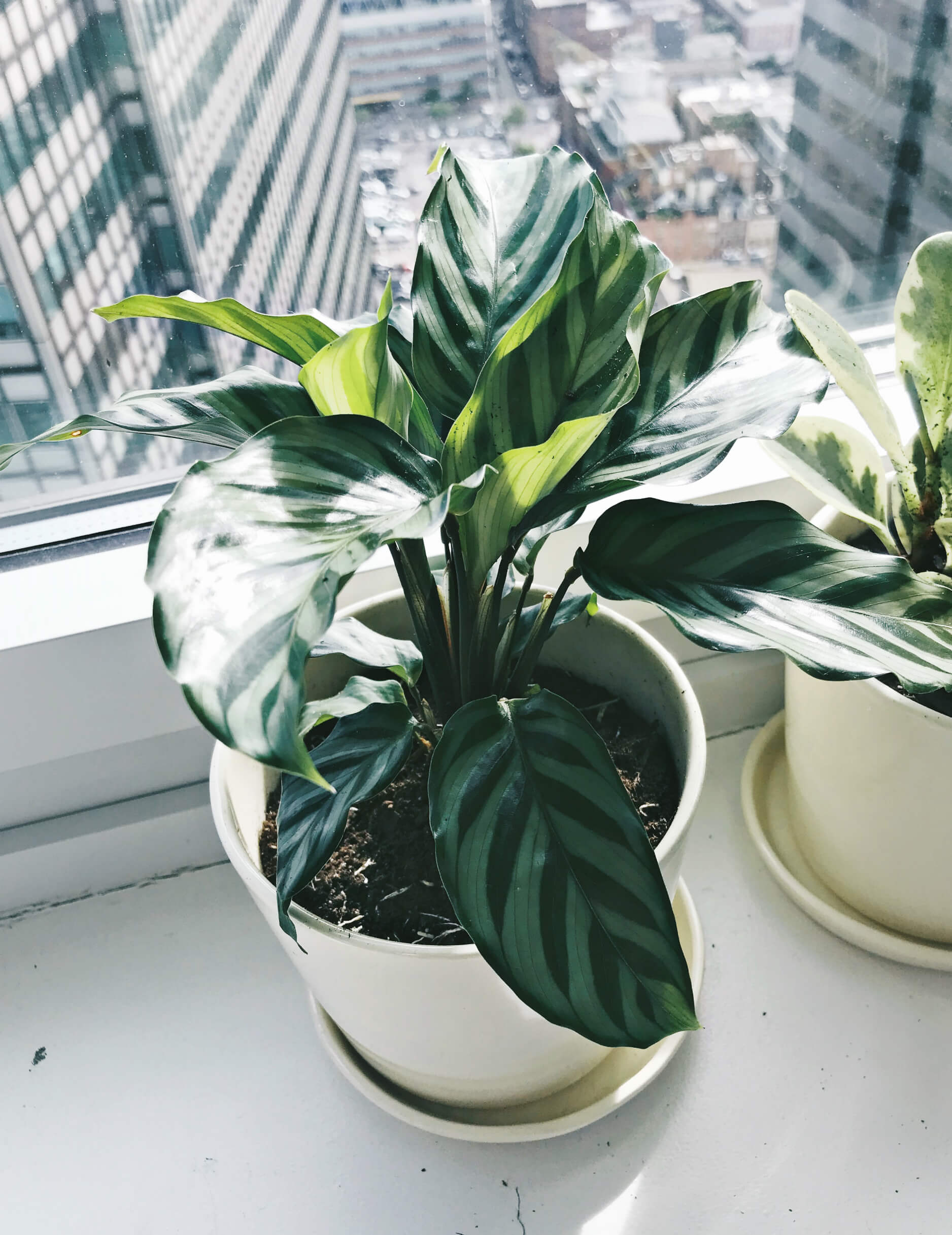
CALATHEA FREDDIE
A bold and beautiful houseplant, calathea looks good even without flowers
💧 Every 1-2 weeks
🌞 Indirect light to dappled sun
Purchased from: The Sill
There are lots of varieties of calathea, but one of the most common has luscious, dark green leaves that have scalloped edges and silver brushmarks on the top of the leaves. Underneath, the leaves are a lovely shade of burgundy purple. Plus it’s pet-friendly, perfect for curious cats!
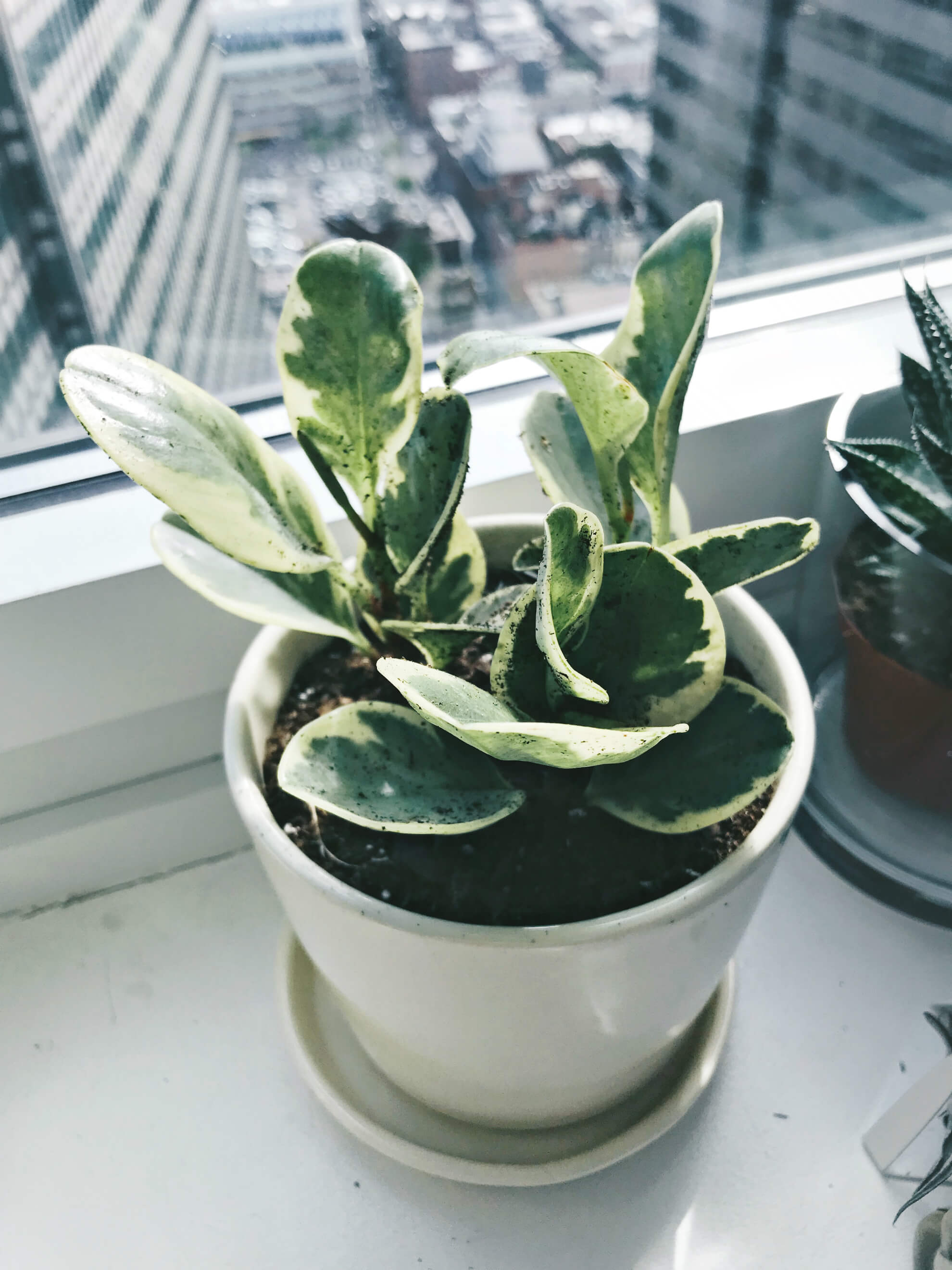
PEPEROMIA MARBLE
Characterized by its thick spoon shaped variegated leaves
💧 Every 1-2 weeks
🌞 Medium, indirect light to dappled sun
Purchased from: The Sill
Peperomia is a delightful, easy-to-grow houseplant that’s been around for years and it’s still popular. Part of the reason for peperomia’s popularity is that it’s such an easy indoor plant. Plus, it’s one of the better small houseplants, so you don’t need a lot of room to grow it Also pet friendly!
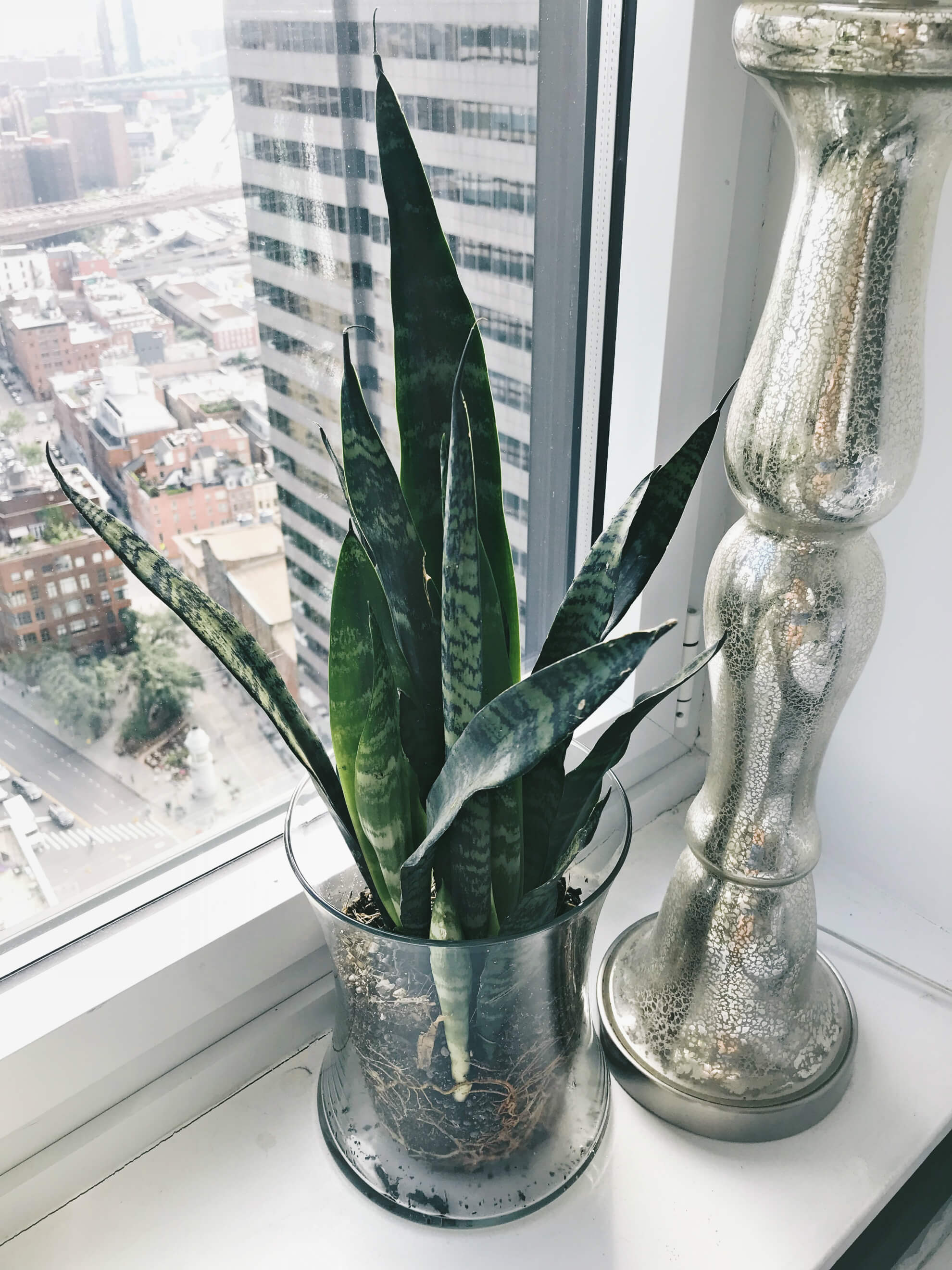
SNAKE PLANT
The most straightforward, tolerant houseplant around
💧 Every 3-4 weeks
🌞 Low light, rotate 1/4 turns weekly
Purchased from: City Blossoms
A tender evergreen perennial with stiff, erect, thick, spearlike leaves with a glossy texture about 2 ft. long. Distinctly marked white-and-green or yellow-and-green foliage. The Snake Plant is always at the top of any list as being one of the most tolerant of all decorative plants, surviving the most unsuitable growing conditions, abuse and neglect a plant could ever receive.
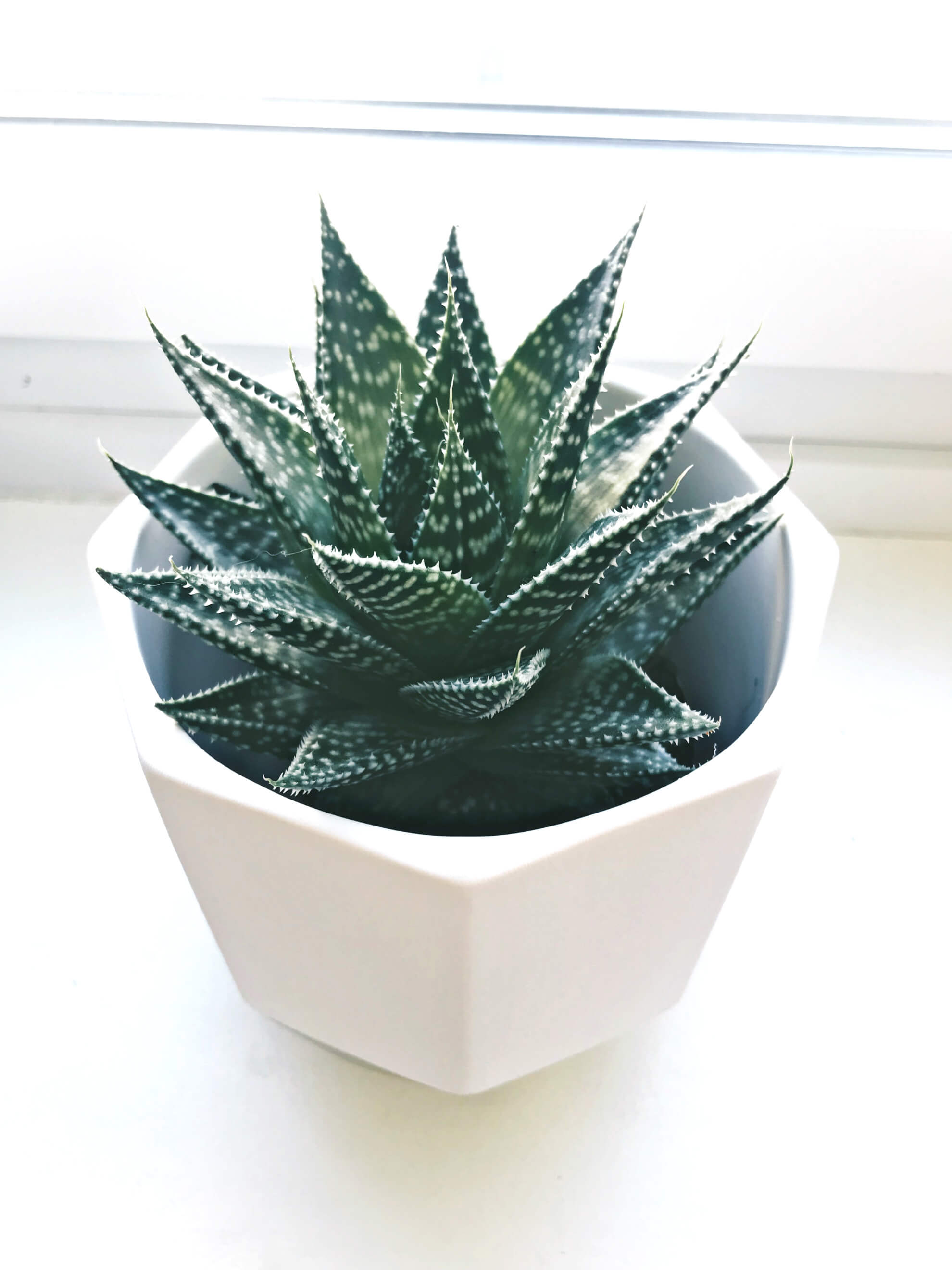
HAWORTHIA SUCCULENT
Delightful little succulents that form very attractive and singular small houseplants
💧 Every 3 weeks or when soil is extra dry
🌞 Low or indirect light
Purchased from: City Blossoms || Planter: Amazon
Haworthias are almost always small and very (very) slow growing plants but tend to look brilliant in unusual containers or interesting soil mixes. As a result they can make fantastic easy care gifts and presents for people, suiting either a home or office desk environment.
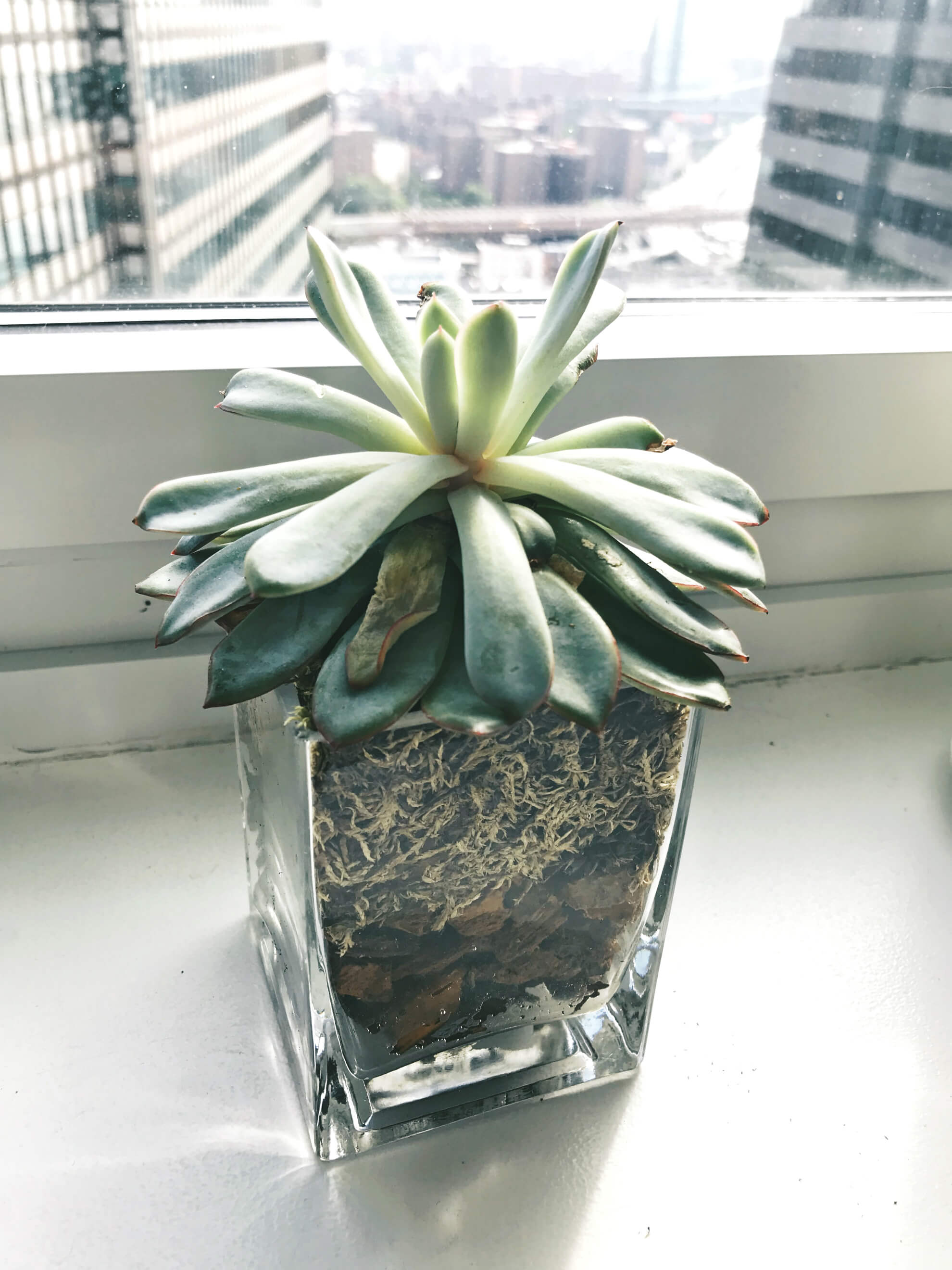
SAKE FAVOR SUCCULENT
Delightful little succulents that form very attractive and singular small houseplants
💧 Every 3 weeks or when soil is extra dry
🌞 Low or indirect light
Purchased from: City Blossoms
Sake Favor Succulents are drought resistant plants in which the leaves, stem or roots have become more than usually fleshy by the development of water-storing tissue. Many succulents come from dry areas such as steppes, semi-desert, and desert, where high temperatures and low precipitation force these plants to collect and store water to survive long dry periods.
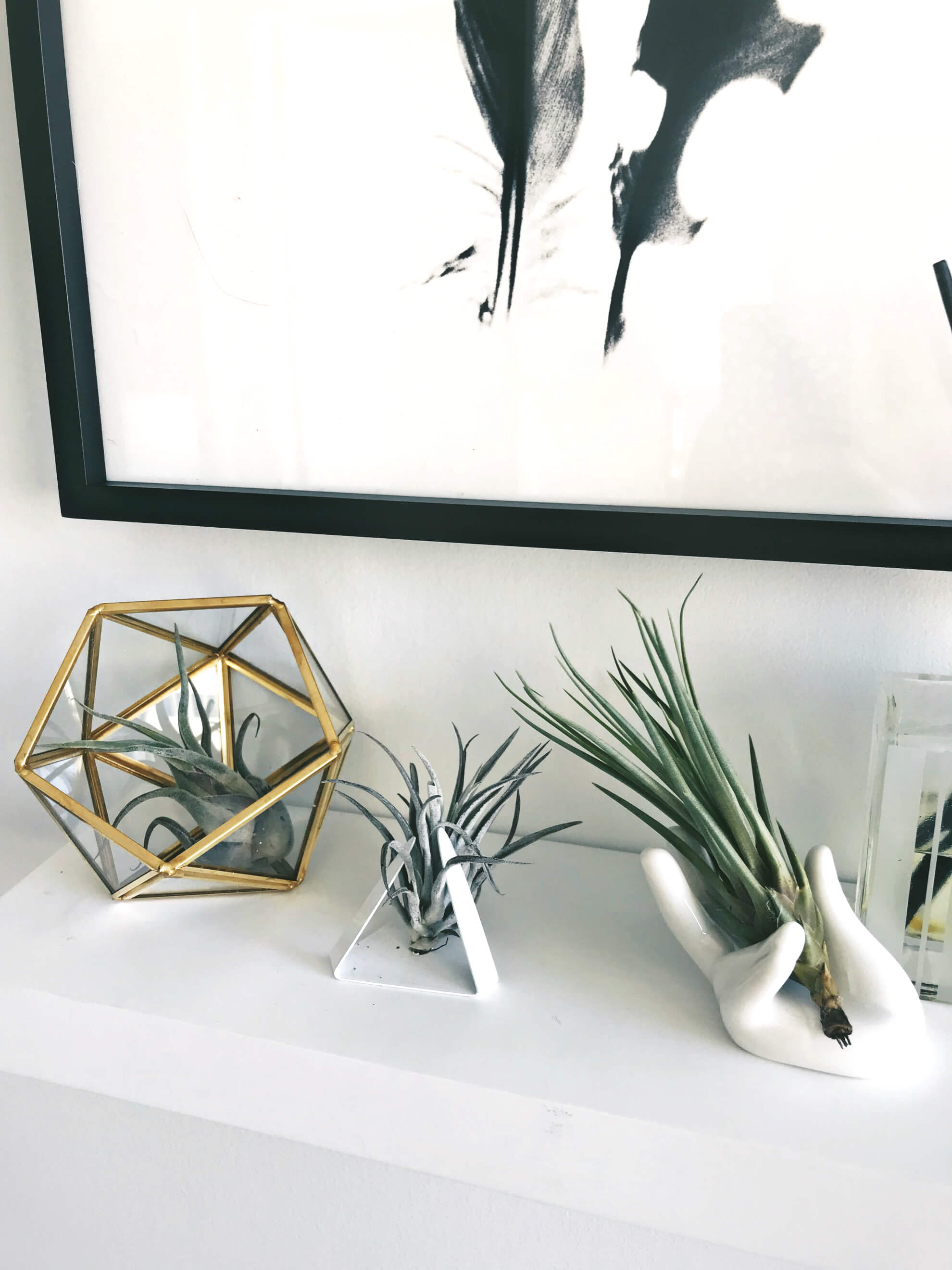
AIR PLANT TRIO
Perfect for those with a fear of houseplants
💧 None
🌞 Low or indirect light
Purchased from: The Sill || Gold Terrarium: Amazon | Ceramic Hand: Amazon
Air plants grow without dirt and come in all sizes and colors. Although air plants used to be a rare greenery, these hardy plants have become popular in the past couple years. Many air plants grow with strap-shape or slender triangle-shape leaves, and most have attractive tubular or funnel-shape flowers.


Those plants are not only useful, they’re also so aesthetic! Thanks for the tips! I definitely need some plants in my apartment.
xx Beatriz |www.livelovewearit.com
Thank you so much Beatriz!! xx
Your plants are so gorgeous and healthy. I have a snake palnt and a bromeliad (or whatever its called rofl). that’s it. I barely get any natural light in my house during the day so I cant do much else besides bamboo.
I totally agree! I can’t live without fresh flowers in my apartment. It is not only beautiful to look at, but I really believe it is stress relieving 🙂
Great post! I just started my own collection of indoor plants myself. The rubber tree is my favorite, I love watching it grow!
Kim
https://katandkim.com/
I am impressed with your knowledge and passion for what you do.
You are not only a great teacher but a true inspiration.
Your dedication to this industry has allowed me to learn from you and share my own experiences.
Thank you for everything you have done and continue to do.